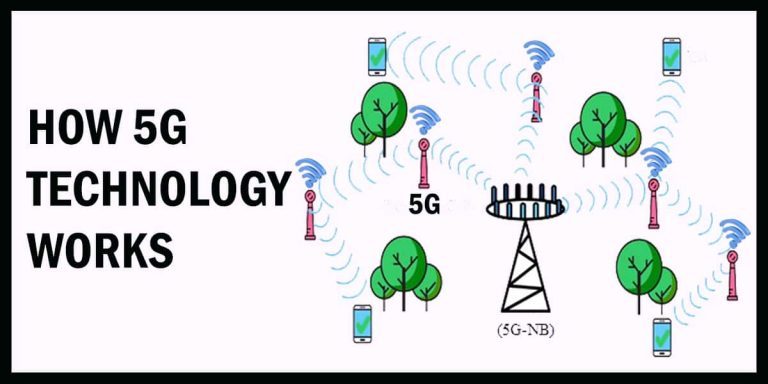What Is Internet Telephony? How does It work?

Key points
- Internet Telephony covers online communication methods like VoIP, originating in the ’70s. It routes calls, messages, and video over the Internet, offering cost-efficiency, mobility, scalability, and integration benefits.
- Advanced features like call forwarding, video conferencing, and integrated software apps improve business productivity and collaboration.
- Internet Telephony involves signaling, voice packetization, and QoS. Strong bandwidth, low latency, wired connections, and data prioritization are vital for quality calls.
The umbrella technology that encloses all other Internet Protocols (IP) is Internet Telephony. From VoIPs to other telephone-like communication conducted through the Internet comes under Internet Telephony.
💡 Did you know? US military research network ARPANET launched the first-ever version of Internet telephony in 1974. This means Internet Telephony is almost half a century old.
Internet telephony includes a wide range of communication solutions involving various digital phone systems based on numerous IP services. It helps to increase productivity and be cost-effective by taking advantage of the Internet and its various applications. This leads us to what exactly is Internet Telephony.
What Is Internet Telephony?
Internet telephony means the use of the Internet to route calls, voicemails, messages, and video calls rather than traditional methods. Users of Internet Telephony can make calls and receive them, send and receive multimedia messages and utilize its other features from anywhere around the world as long as they have an Internet Connection.
In Internet Telephony, voice calls and other information will convert to digital signals. These digital signals travel through the internet, as data packets from one point to another, using a packet-switching system. With its features, Internet telephony is gradually replacing traditional telephone systems and is becoming popular day by day.
How does Internet Telephony Work?
The working of Internet Telephony involves three key processes that enable the transmission of calls or other utilities.
The three main aspects of how Internet Telephony works are:
a. Signaling Process
Signaling is the first and most important process for establishing a connection and managing calls between two parties. In simple terms, this process means that people exchange information to start a call, find the right path for the call to go through, and then end the call when they’re finished talking.
- Call Setup: During this operation, the caller’s device sends a signal to the receiver’s device to initiate the call.
- Call Routing: This involves the determination of the best possible path for the call to take over the Internet.
- Call Termination: The final step is to terminate the call when the conversation is complete.
b. Voice Packetization and Transmission
After completion of the signaling process, the call is set up, and the actual voice communication takes place. In this process, we sample the voice signal at regular intervals and convert the analog voice signals into digital data packets that we can transmit over the Internet. Then these packets are transferred over to the receiver’s end, where these digital packets convert back to analog voice signals.
c. Quality of Service (QoS) Considerations
Quality of Service (QoS) Consideration involves the whole cycle. It involves the transmission of the signals with minimal delay, jitter, or packet loss. QoS is mainly associated with the transmission process. It is critical to ensure the high quality of the call and remove any delays or interruptions during the conversation. This process is similar to techniques like buffering and error correction.
Types of Internet Telephony
Typically internet telephony is categorized into two forms On-premise and Cloud-Based. Each has its own advantages and features. However, both rely on the Internet to provide their services. The only difference is the location of their servers.
On-premises
As the name implies, on-premise internet telephony requires an actual piece of hardware at the location that connects to the Internet using a LAN or WAN. It works just like a traditional Private Box Exchange (PBX) to provide services; therefore, it is also known as IP PBX.
An on-premise Internet telephony solution rarely gets any updates or requires maintenance, and you have complete control over it. It is an ideal solution for anyone looking for a reliable system as it has sturdy and uninterrupted service.
Hosted or cloud-based
On the other hand, Hosted or Cloud-based Internet Telephony does not require any hardware. A provider acts as a medium to provide this service through cloud-based technology. The working is similar to On-premise. However, the features of cloud-based are compelling when we compare.
Benefits of Internet Telephony for Business Communication
When compared to Traditional Telephony, Internet Telephony comes out to be a better one. It has huge benefits as it is efficient, cost-effective, provides mobility, improves productivity, and is scalable. It is now the preferred option for businesses looking for a cost-effective, efficient, scalable, and easily integrated Business Communication system.
Improves Efficiency and Productivity
If we compare Internet telephony with traditional telephony, we can find a wide range of features in Internet telephony. These features include call forwarding, voicemail, video conferencing, and instant messaging. Businesses can enhance collaboration, remove communication barriers, and improve efficiency and productivity with the use of Internet telephony systems.
Cost-effective
Communication costs will be low if we eliminate the traditional phone lines and hardware. An Internet Telephony method does not require any dedicated phone line or other charges for their setup. Its offerings and features come in simple, low-cost, and proficient plans.
Provides Mobility
Mobility in modern times is of utmost importance. Internet telephony solutions are very flexible and mobile, and consumers employ its features remotely regardless of location. This mobility is crucial in a business environment as it helps businesses expand their reach and operate in multiple locations without any boundaries.
Provides Scalability
It is necessary to counter the ever-changing communication needs of the world with a scalable option. Internet Telephony is easily scalable, which makes it the perfect solution. We can effortlessly make changes to its features and the number of users in consideration of the needs and demands.
Integration with other systems
The compatibility of a communication system with other tools can be a turning point in any success story. Internet telephony or VoIPs can comfortably integrate with software applications, Customer Relationship Management tools, and Productivity tools, streamlining the communication as well as the workflow of an individual or company.
Internet Telephony Requirements
There are some specific requirements we must ensure to get a high-quality communication experience with Internet telephony.
Let’s explore each requirement in detail:
Network Bandwidth
A strong internet connection with sufficient bandwidth is essential for coherent transmission of the voice data. The amount of bandwidth required is directly related to the number of calls made. Insufficient bandwidth may result in poor call quality or delays during the conversation.
Low Latency
Latency is the time a data packet takes to transmit from one point to another. The lower the latency, the faster the data packet travels. So low latency is extremely important for smooth and seamless data transfer in Internet Telephony.
Wired over WiFi
Though WiFi connections seem fast and convenient, a wired internet connection is a more reliable method for Internet telephony. Wired connections or Ethernet offers a more stable and consistent network as well as low latency, which is essential for Internet telephony. For an uninterrupted Internet Telephony experience, it is advisable to use a device that is directly connected to the router.
Data Prioritization
We should prioritize the voice packets over other types of data in the event of a traffic jam. The prioritization of Internet Telephony traffic can help keep voice calls stable even during peak hours. For reliable and timely delivery of voice data, You can use Quality of Service.
Frequently Asked Questions (FAQs)
Definitely! Several providers offer Internet Phone numbers or Virtual Numbers. With so many options, it can be a difficult task to choose the perfect one. However, KrispCall is our top pick. With its attractive features and plans, you can get your desired Internet Phone Number that fits your needs.
Organizations like KrispCall and Dialaxy provide Internet Telephony Services. They provide virtual numbers based on cloud-based telecommunication in various regions with appealing features at cost-effective prices.
Internet Telephony or VoIP solutions are designed in such a way that they route calls and messages through the Internet. These also have valuable attributes like call routing, call forwarding, and voicemail that remove any disturbance and significantly improve the quality of communication between two people.
Conclusion
The need for Internet Telephony goes hand in hand with its growth. As the demand for Internet telephony evolves, so will its capabilities. And with its growing nature, it is becoming more flexible and affordable. A wide range of new features are continuously added to its arsenal, which will make it even more widespread and popular.






